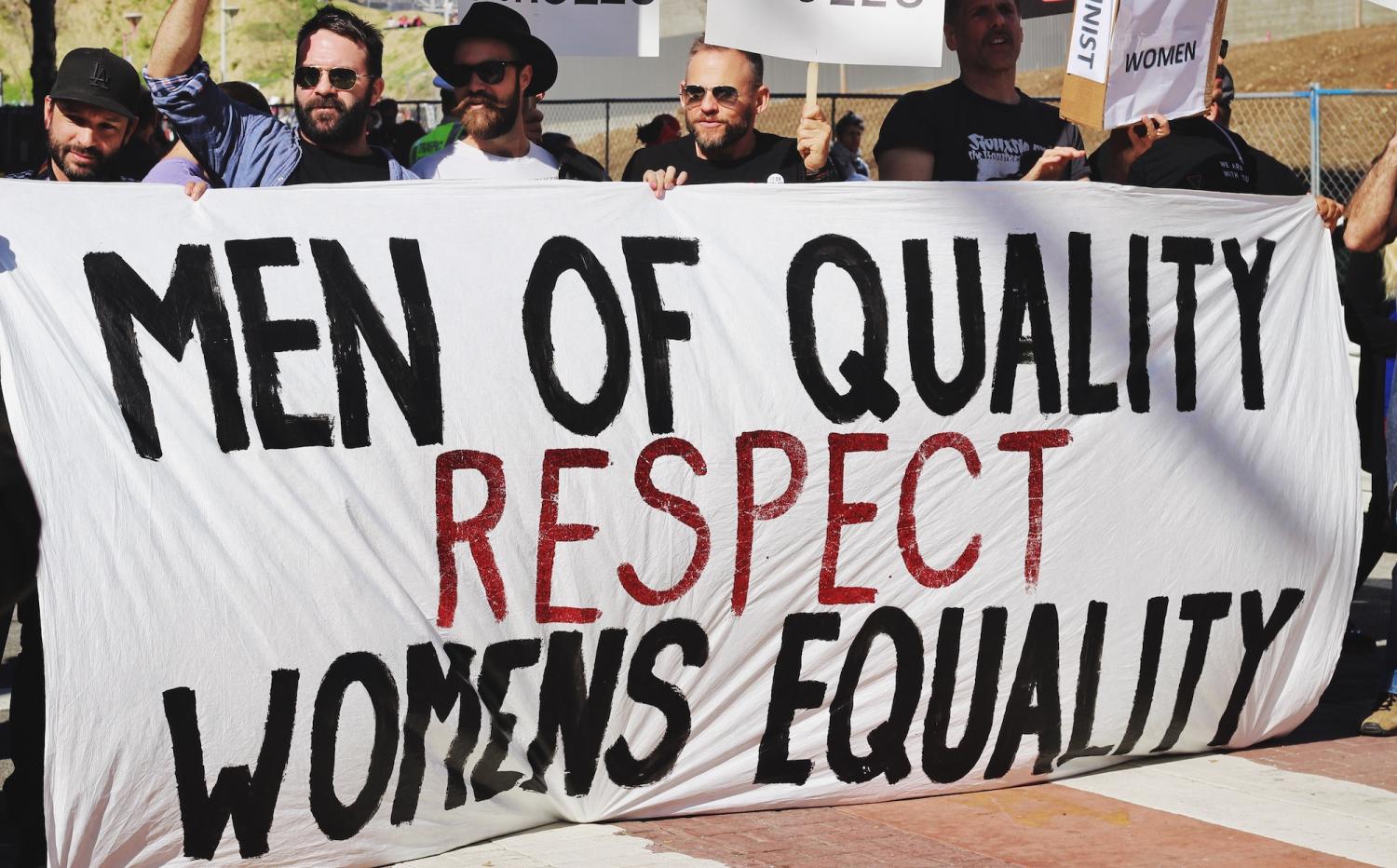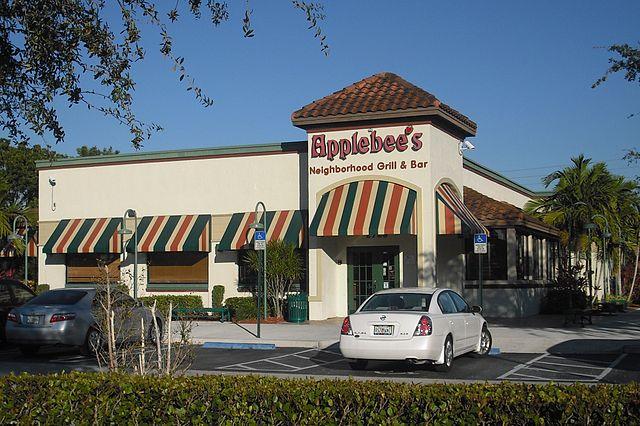How Big Data is Revolutionizing Corporate Training


By Joe Peters
Today's businesses often invest heavily in analytics tools, staff and expertise, and this contributes to the fact that big data is quickly becoming the basis of many corporate decisions. The data, however, must be properly structured and analyzed in order to be used by corporations for decision-making purposes, and ideally it will be timely information.
One of the most significant uses of big data is in the corporate training realm. For example, development experts and human resources professionals use data to hone in on skills development and to make crucial decisions regarding corporate training. A closer look at big data's use in corporate training can be enlightening.
Determining training needs
Before big data can be used for corporate training, it is important to understand how it can be used in a corporate training realm. For example, it can be used to identify learning needs of individual employees, teams and departments. By doing so, individual skills that are needed for improvement can be determined, and this can be useful in determining which training courses to cover. In addition, big data can be used to determine the best educational platform to use, such as an online course, a classroom setting or a blended approach. The delivery of the information, such as in a hard copy or a verbal format, can also be determined. The employees' schedule, skills and needs should be taken into account when making a final decision about corporate training.
Conducting continuous improvements
Corporate education is not a one-time experience, and instead, it requires continuous effort with ongoing improvements. Big data enables this type of ongoing experience for corporate training by analyzing the previous experiences that the company has used. For example, it provides information regarding how employees interacted with and benefited from modules to determine which were most or least effective. In fact, some are cloud-based platforms that provide you with real-time feedback for instantaneous information and improved corporate training.
The methodology makes it fast and easy to collect and analyze data from a large number of users and courses at the same time for superior feedback results. For example, some learners may skip through some of the materials without a negative impact on their learning, and this enables you to tweak the educational sessions going forward. Altogether, you will benefit from having insight into course effectiveness, learner preferences and usage patterns so that you can refine corporate training going forward.
Personalized approach
Big data may be seen as being impersonal, but it can provide you with the ability to personalize the learning experience and make the best use of advanced education technology in a personalized way through analysis and tools. Data analysis, for example, gives human resources professionals more insight regarding the strengths and weakness of the staff members so that they can adjust their processes to accommodate their strong points more fully. It also enables you to track learning processes and effectiveness so that you can create more personalized and effective processes.
Learner data can be blended with demographics to show the progression of corporate training efforts in real-time, and this enables you to immediately intervene in the learning process if necessary. It also enables you to know more specifically which learning modules are most effective for specific employees or groups of employees.
Anticipating future trends
Big data and sustainability are two business trends that are focused intently on optimizing operational productivity and increasing profits. By providing adequate training for staff members, you can more likely secure the positive outcome that you seek, and big data is critical in this process because it enables you to align your training programs with real-time analysis of training efforts.
In today's modern business world, corporate social responsibility and sustainability are both needed for success, and increased savings and profits are available to you when you follow through on giving your employees the training they need. Big data can be used to create effective training programs that encourage employees to focus on sustainability and other social initiatives, and this can have a major impact on your business's success in the future.
In an IDG study in 2015, 80 percent of enterprises and 63 percent of small and medium businesses said they were already using big data projects for planning purposes. Big data is the key to improving corporate training because it provides real-time information with in-depth analysis of the information. It enables businesses to be more consistent and effective in their efforts while also helping companies anticipate future trends and to make changes more efficiently.
Joe Peters is a Baltimore-based freelance writer and an ultimate tech enthusiast. When he is not working his magic as a marketing consultant, this incurable tech junkie enjoys reading about latest apps and gadgets and binge-watching his favorite TV shows. You can reach him @bmorepeters
Image courtesy of pixabay.com, licensed under CC0 Public Domain
Global coalition comes together to change the future of protein


A group of international businesses and NGOs have joined to form The Protein Challenge 2040, a first collaboration across the protein system. Facilitated by Forum for the Future, a sustainability non-profit, the coalition’s founders include WWF and GAIN; retailers Target and Waitrose; Volac, a leading dairy nutrition firm; food manufacturers The Hershey Company and Quorn; and taste and flavour experts Firmenich. The partnership brings together these representatives from animal, plant, and alternative protein industries to address issues related to protein. Protein is an essential part of the human diet, but the way it is produced and consumed today places an increasingly heavy strain on land and sea resources. The production of protein is associated with significant social, environmental and economic impacts—for example, the cultivation of soy as animal feed is a big drive of deforestation, and food and agriculture are among the biggest contributors to climate change. And consumption is unbalanced: an estimated two billion people suffer from malnutrition which results in major health risks, while in the developed world, protein consumption is often more than that required for optimal health. The bottom line question on the agenda is to address the question: “How can we feed nine billion people enough protein in a way that is healthy, affordable and good for the environment? Through in-depth research and work with food, nutrition, health and technology experts across the world, the coalition has mapped the interrelationships within the entire protein system for the first time. Six areas of innovation have been identified, on which the group plans to focus solutions to meet future demand sustainably. The coalition is now looking for additional partners with resources, expertise and drive to take action in these areas together. Read The Protein Challenge 2040 summary report.
Webinar today to discuss risk-free supply chain


Webinar Alert: Today, Mar 1, 3 pm (GMT) a free live webinar with Timberland’s Sustainability Director and Maersk’s Head of Responsible Procurement will discuss building a risk-free supply chain. Topics will include circular economy principles that will help you manage your supply chain processes; best practices on managing high risk suppliers to mitigate the biggest threats to your supply chain; and innovative future technology with the power to disrupt supply chains. The preview coincides with the announcement that Harry Patuszek, VP of Enterprise and Community Development at PYXERA Global will speak at the 2016 Responsible Business Summit this June 7 and 8 on ways to create a risk-free supply chain. Convened by Ethical Corporation, a partner of PYXERA Global, the Responsible Business Summit convenes over 400 responsible brands in London to deliver cutting-edge insights in areas such as the Global Development Goals and climate change, business risk, and customer behavior.
Empowering Men As Gender Equity Advocates


Despite the big gains made in the last few decades, we still have a gender equality problem. Women represent about 40 percent of the global labor force, but are 50 percent of the population, according to the World Bank. Men are over 95 percent of the CEOs of the world’s largest corporations.
The gap between women and men when it comes to both economic participation and political empowerment is big, as the World Economic Forum Gender Gap Report 2015 finds. “Only 59 percent of the economic outcomes gap and 23 percent of the political outcomes gap have been closed,” the report states.
One important way to help women achieve gender equality is to engage men. And that’s why the UN launched the HeForShe campaign in September 2014: to engage men in achieving gender equity. The stated goal of HeForShe is to “achieve gender equality by 2030.” As UN Populations Fund said, “Gender equality cannot be achieved without the involvement of men and boys.”
Actress Emma Watson spoke as part of the launch of the HeForShe campaign in September 2014. “How can we affect change in the world when only half of it is invited or feel welcome to participate in the conversation?” Watson said. “Men -- I would like to take this opportunity to extend your formal invitation. Gender equality is your issue, too.”
PricewaterhouseCoopers (PwC) signed on to the HeForShe IMPACT 10x10x10 Initiative in January of last year, making it one of the first 10 corporations around the world to commit to bold action on gender equality.
“In the past conversations about gender equity often fell on the shoulders of women,” Chris Brassell, Director in the US Office of Diversity and Inclusion at PwC told Triple Pundit. “That’s not a sustainable strategy, and it allowed those who weren’t actively engaged to remain on the sidelines. It takes all of us to address gender equity.”
Working toward gender equality in the Oscars
Last night people all over the world tuned into the Oscars. And Hollywood is one place where gender equality has yet to be achieved. “There is one group that’s not a minority, but still under-represented in the film world: women, who are half the population, but represent a small fraction of workers in the film industry,” a Variety article stated.
There is bad and good news when it comes to women as Oscar nominees, as the article points out. First, the good news. Women represent 50 percent of the nominees in makeup and hairstyling and editing. In production design, women are four out of 11 nominees, two of the six nominees in adapted screenplay. However, in original screenplay they are only two out of 14. There are only seven women in 24 producers for best picture, and only one women in visual-effects out of 20 nominees. In certain categories there are no women nominees, including directing, music score, and sound editing.
One way PwC promotes a message of gender equality is through a global Aspire to Lead series in which inspiring leaders in their fields provide practical insights into leadership. On February 17, the Academy of Motion Picture Arts and Sciences hosted an event with PwC featuring Geena Davis, Founder of the Geena Davis Institute on Gender in Media. “We had a real open dialogue about gender equity.” Brassel said. [Ed. Note: read TriplePundit's coverage of the event here.]
PwC’s involvement with the Oscars doesn’t end with the Aspire to Lead webcast. They have counted the Oscar ballots since 1934 and this year they put a unique spin on the red carpet in the lead up to the event, Instead of asking about what or who they are wearing, Shannon Schuyler, head of corporate responsibility and chief purpose officer at PwC, asked social entrepreneurs, educators, fashion designers and professional sports players about their purpose.
People like MSNBC anchor and HeForShe advocate, Richard Lui and fashion designer Carrie Hammer walked alongside the 2015 Hart Vision Teacher of the Year and Donorschoose.org board member, Genein Letford.
That is a big deal because the questions usually fielded to women Oscar attendees have to do with their clothing, shoes and jewelry. But men are usually not asked about what they are wearing. As Brassell says, “instead of asking women on the red carpet what they’re wearing, ask them for more,” he said. “Some individuals can be provoked to offer more.”
What men need to understand about gender equality
There are a few things men need to understand about gender equality and one is that gender equality is good for men too. “Everyone benefits from this,” says Brassell. Teaching men about the issues involved is also important. Men must realize “you can’t buy a book and then become an effective leader,” says Brassell. “There’s a process involved and a man has to understand he only really becomes an ally to women when a woman says he is, not just when he thinks he is.” Brassell told a story that showed how one PwC man is working to empower women and “buck traditional norms.” Kirk, a PwC professional, was moved by the HeForShe campaigns and made a decision to change his last name to his wife’s when he married. In an email to his PwC teammates, Kirk explained that he toiled with the idea of changing his last name but ultimately decided it was one way to show his personal dedication to support gender equality in a very visible way.
Image: Samantha Sophia and Roya Ann Miller via Unsplash
Malé, the Island Capital Perfect for a Smart Cities Lab


If any city were ripe to be a test bed for next-generation technology and urban planning, it would be one in a remote island country with few resources. Malé, the capital of the Maldives, is a perfect example.
The city is only 2.4 square miles (5.8 square kilometers), yet Malé is packed with over 100,000 people. Traipsing through the city reveals a vibe similar to Delhi or Mumbai instead of the other 1,200-odd islands that make up this tiny country of only 115 square miles.
At at time when many island states are among the most vocal countries when it comes to addressing the risks of climate change, one would think that Malé would be a leader on sustainable development. And in many ways, the Maldives itself is an economic development success story — at least according to the World Bank, which categorizes the country as having an upper-income economy. In 1980, the Maldives was one of the world’s 20 poorest nations, but the country’s GDP has expanded exponentially in the past 30 years.
The city is certainly compact, with its population density ranking among the highest on Earth. Malé, however, has become an environmental nightmare. The Maldives’ impressive economic growth has meant its people can afford more and better goods and services, as evident in the scooters and motorbikes that have taken over the island. Walking around the city is hardly a pleasure — it can actually be dangerous, due to the fact that sidewalks are nonexistent and the onslaught of motorbikes will inevitably make you want to just hide in your hotel. Even sauntering along the waterfront is fraught with risk thanks to irregular sidewalks and traffic congestion — there is no easy path to enjoy the teal- and cyan-colored waters that help make the Maldives an appealing place to visit in the first place.
One estimate suggests 1 in 6 residents in Malé own a motorbike, so do not expect any type of restriction to occur anytime soon. Considering the love Maldivians have for their scooters and motorbikes, the odds are higher that the country’s ban on dogs would be lifted first. “My daily runs around the island at night are hardly a pleasure,” said one Big 4 consultant I met who offered me a walking tour of Malé.
Although the United Nations and global governments have done their share to ensure Malé and the rest of the Maldives balance economic growth and sustainability, more work needs to be done. The quality of life could improve rapidly if a simple light rail was installed to travel the length of the island, which would improve traffic for the taxis and delivery vehicles that are needed to keep people and goods moving.
The Maldives’ government says it has a plan in place, which includes planned clean-energy installations, the development of an “integrated public passenger transport” and improvements in public health, but little evidence is on display in Malé. Public transportation is limited to ferries that haul people and products to outlying islands, including the one that is home to the country’s international airport. Recent efforts to improve the city have gravitated toward technology, as in Qatar-based Ooredoo’s commitment to offer Malé’s citizens free Wi-Fi. Those Wi-Fi spots, however, are few and far between.
One reason why sustainable development has lagged in Malé is because the Maldives has long been running huge budget deficits. While growth in the tourism sector has fueled the country’s economy, youth unemployment is still high, and true economic diversification has a long road head. The country continues to make strides in education, and there is a hunger for its youth to have careers not related to fishing, agriculture or tourism. Malé would be a great laboratory for investment in technologies and design strategies related to smart cities, but the evidence suggests that won't happen for a long time.
The result is a lost opportunity — guests who travel to the Maldives often have to spend at least one night in Malé before or after they visit one of the nation’s many resorts. Most of the country’s cultural treasures are here, and the city’s public spaces -- including a public beach with stellar views -- offer a quiet respite from the hectic city. And the city can be a convivial place to spend a day or two: Restaurants and cafes serving “short eats” offer delights for foodies; the waterfront presents impressive views; and the city’s largest open space, Sultan Park, is a great place to hang out day or night.
Malé could become a magnet for leaders and citizens worldwide who want to seek ideas on how to plan for long-term resilience in an era of diminishing resources. Unfortunately, short-term thinking is dogma in what would otherwise be a fantastic and educational place to visit, whether for research or even on the way to one of the Maldives’ famous posh resorts.
Image credits: Leon Kaye
How Do America’s Heartland Cities Achieve Economic Growth in the 21st Century


Tulsa, Oklahoma, is a great town with friendly, talented people. It has a downtown that urban millennials love with an attractive mix of loft-style housing, fun restaurants and entertainment.
But Tulsa is also a town built on the success of the oil and natural gas industry. When fossil fuel prices are high, Tulsa’s economy significantly benefits. With today’s low oil and natural gas prices, the town -- and the state of Oklahoma -- confront job loss, painful tax revenue declines and real threats to economic growth.
In many ways, Tulsa’s economic development situation defines U.S. towns located in America’s heartland. They are towns anchored in what made America successful in the 20th century. Some towns like Tulsa are heavily aligned with fossil fuels. Many are agriculturally-oriented with a strong link between economic success and the heavy use of chemical fertilizers, water and pesticides. Still others are regional industrial or service centers that are increasingly being challenged by a global economy and digital innovations. All of these towns share this question: How do we achieve sustained economic development in the 21st century?
A growing group of Tulsa business and community leaders are coming together to explore how sustainability can be a 21st-century path for sustained economic development.
Sustainable Tulsa
I recently had the pleasure of working in Tulsa with two key organizations leading this exploration on how sustainability can grow an economy. Sustainable Tulsa is one of these organizations. It's a group of community and business leaders who meet monthly to surface best practices for delivering a triple-bottom-line result.
Led by its executive director, Corey Williams, Sustainable Tulsa is developing a benchmarking process among 27 piloting organizations. The process is being facilitated by 20 volunteer coaches drawn from throughout Tulsa and Oklahoma. Through this collaborative process, the group developed a ScoreCard that will introduce sustainable best practices to an organization and quantify reductions in costs and environmental impacts for decision-makers.
Tulsa Community College (TCC) is another key organization spearheading the exploration of sustainability in Tulsa. TCC is a two-year college servicing more than 27,000 enrolled students by offering over 220 degrees across its four campuses. Led by President and CEO Leigh Goodson, with staff leadership from Dr. Michael Limas as director of academic and campus services, the school has created a cross-functional effort to explore how to use sustainable best practices to lower costs and to better prepare students for success.
Importantly, Tulsa’s efforts toward sustainable economic development also include the town’s impressive mix of academic institutions and entrepreneurs. I had the pleasure of meeting key staff and faculty at Oral Roberts University, located in Tulsa. They outlined for me how they successfully cut the campus' energy costs by two-thirds through energy efficiency. I learned in talking to University of Oklahoma representative how the college is fulfilling its energy requirements using wind power. At Tulsa University, I was honored to be interviewed on sustainable best practices by the local NPR station housed on campus.
I also met pioneering entrepreneurs who are using sustainability to win customers, reduce costs and make a difference. Libby Billings, owner of Elote, is one of my favorites. Her restaurant is a Tulsa favorite that provides a fun dining experience around healthy Mexican food. She has also pioneered a farm-to-fork-to-farm process where she buys locally-produced, organic food and then returns the food waste to the farms for composting.
Carla Grogg has become my newest example of sustainable best practices used by nurseries. Her store, Grogg’s Green Barn, attracts clients looking for edible and native plant landscaping best practices. She walks her talk by using rainwater-capture irrigation and biodynamic agricultural practices, including an insect hotel and onsite chickens to promote plant growth. Her nursery is an entertaining landscape of innovatively repurposed fixtures that house plants, animals and insects.
Tulsa’s sustainable growth question
The real question for Tulsa is not whether there is a sustainable path to economic growth. There is. The city has the talent and institutions to achieve whatever locals set their minds to achieving.
Tulsa’s real question is whether the town is willing to change. Tulsa has justifiable pride in being a leader in the oil and natural gas industry. This industry has been a source of great wealth and success. Change at the expense of selling more oil and natural gas is unwelcome.
However, change now defines the 21st century. This is a century being defined by:
- Disruptive technologies
- The emergence of low-carbon economic advantage
- Millennials
- Global competition.
The question facing Tulsa, and every American town, is: Will they choose to change? How they answer that key 21st-century question will determine their potential for sustainable economic development.
Image credit: Flickr/Frank Boston
Wage and Race Discrimination Lawsuits Slam Applebee’s and IHOP


More fast food company employees, along with workers at big box retailers such as Walmart, have scored wage increases in recent years. Plenty of improvement can be made on how workers in the service industries are treated, especially when it comes to wage fraud, but more companies are understanding that decent wages for employees can improve their overall reputation and strengthen local economies. Speaking of wage fraud, the company that manages franchises for two of America’s most popular chain restaurants has yet again become embroiled in litigation over wage disputes and accusations of racial discrimination.
On Feb. 18, a proposed class action lawsuit was filed against DineEquity, the parent company behind Applebee's and IHOP. The plaintiff, Jewel Gardner, has accused DineEquity of misclassifying her employment status in order to avoid paying overtime wages. Gardner, who worked for DineEquity for 22 years, has alleged that despite her job title as a manager, she had no authority to hire or terminate employees and that job title was only given in order to avoid paying her when she worked more than 40 hours a week. Gardner has also accused DineEquity’s management of pitting African American employees against each other, which resulted in what Gardner called a racially charged work environment. According to documents submitted for the complaint Jewel Gardner vs DineEquity, Inc., other alleged violations outlined include the failure to pay wages within a required time frame, the failure to pay wages at all, the lack of rest periods as required by California labor law, and missing payroll records.
Gardner was fired in February 2015 after she complained about an incident in which she claims she was harassed by a colleague. The company has responded that she was terminated after she withheld important information about a franchise deal. Gardner claims that she was reprimanded in front of other employees at a company meeting, and after she took issue about how she was treated, she was put on leave and then fired.
DineEquity has been hit with legal action before over alleged labor code violations. In 2012, waiters and bartenders at Applebee’s restaurants in Illinois sued to be compensated for work for which they could not receive gratuities, such as cleaning bathrooms and washing dishes — while being paid the lower federal minimum wage for tip-earning employees. A lawsuit filed in Los Angeles last year accused a large Applebee’s franchisee of constantly requiring off-the-clock work and forcing employees to work through lunch breaks without compensation or allowing them to leave the restaurants. IHOP has also not been immune to lawsuits, including cases over unfair compensation practices in Massachusetts and Missouri.
DineEquity has also been pilloried as an example of how companies can take advantage of disabled workers because of the rates even lower than minimum wage at which they can be paid — and, in the Rhode Island Applebee’s case, an employee with autism was not paid for over a year.
DineEquity has not commented publicly on the case or any other litigation, but on its corporate responsibility site, the company says it is “proud” of how it treats its “diverse and talented” workforce.
Image credit: Wiki Commons (Alf2784)
Tiny Town Fights 'Clean Coal' Ash Disposal Whack-a-Mole


A coal industry lobbying organization called the American Coalition for Clean Coal Electricity has been pushing back against President Barack Obama's Clean Power Plan by rebranding itself -- and its product -- as something called "America's Power." However, the public-relations push can't undo the impact of coal ash disposal on local communities.
The latest example comes to us from Fayette County in southwestern Pennsylvania, where a coal ash dump has been linked to serious health issues among inmates of the State Correctional Institute at Fayette and the nearby town of LaBelle.
Not so clean coal
The Fayette prison is a maximum security facility constructed in 2003. It was built on part of a former coal waste and ash dump, and the remaining portion of the dump is still active. Health issues at the new prison don't appear to have made an impression on the media at first, but LaBelle began to hit the radar in 2010, when reporters Don Hopey and David Templeton of the Pittsburgh Post-Gazette listed LaBelle among a group of communities in the southwestern Pennsylvania area where residents were seeing "clusters of death and clusters of people sickened by cancer or heart and lung diseases."
In 2010 a human rights organization called The Marginalized provided more details about health issues in LaBelle along with this description of the community and the coal dump:
"Three coal plants in total send their coal ash on barges down the Monongahela River to LaBelle, where trucks then load the ash and drive it up to the disposal site."As a minefill site, the area does not have any regulations. Trucks take the ash off of barges on the river and drag it up to the dump at the top of the hill without covering the ash with tarps. Because they are uncovered, the dust blows everywhere. From the top of the hill, the dust can become airborne and fill the town."
[snip]
"The ash coats any items left outside and, after a short time, pits them and destroys their exterior. Gutters, cars, doghouses, lawn furniture, and white picket fences all look dirty from the gray ash after only a few months or even weeks."
By 2013 health problems at LaBelle were on the map as an environmental justice issue, as reported by The Contra Costa Times:
"The LaBelle site has been an issue in the area for some time. In June, some local residents filed a federal complaint against Matt Canestrale Contracting, on claims of illegal disposal of coal ash and processing of coal mine waste over many years."The complaint said the 500-acre site contains an abandoned coal refuse pile made up of about 40 million tons of waste, with two coal slurry ponds and millions of cubic yards of coal combustion waste, also called coal ash, that's piled dozens of feet deep on top of the coal refuse."
In 2014 the Post-Gazette's Hopey zeroed-in on the possibility of coal ash impacts on the health of inmates at the Fayette prison, citing a report titled "No Escape: Exposure to Toxic Coal Waste at State Correctional Institution Fayette." The report was produced by two human rights groups, the Abolitionist Law Center and the Human Rights Coalition, which found that:
"... 11 prisoners died from cancer between January 2010 and December 2013, another six have been diagnosed with cancer and eight more have undiagnosed tumors or lumps."Also, more than 80 percent of 75 prisoners responding to the investigators experienced respiratory problems, 68 percent said they experienced gastrointestinal problems and half have skin rashes, cysts and abscesses. Twelve percent, nine of the 75, reported being diagnosed with a thyroid disorder at the prison or having their existing thyroid problems get worse. Many of the prisoners have multiple, overlapping symptoms ... "
The Pennsylvania corrections department issued a study that refuted the findings, at least in terms of the incidence of cancer, and in February 2015 the Abolitionist Law Center announced the launch of another survey of health issues at the Fayette prison, noting that a group called the Center for Coalfield Justice would conduct a similar survey for LaBelle. In May 2015, Vice joined in the reporting on LaBelle with more details, including this:
"Residents had been developing cancer, kidney disease, and bizarre skin issues at an alarming rate. On one street with only 18 houses, there were nine documented cases of cancer. In Luzerne Township, where LaBelle is located, the death rate from heart disease was 26 percent higher than the national average and mortality levels from diseases linked to air pollution were 'elevated.'"
Coal ash whack-a-mole
Hopey picked up the thread again earlier this year, with a January 2016 article detailing LaBelle's fight against a renewal of a wastewater discharge permit for Matt Canestrale Contracting, related to an expansion of operations at the coal dump.
That's where the whack-a-mole comes in.
As described by Hopey, renewal of the discharge permit is part of a process that would enable Canestrale to ship 2.5 million more -- yes, more -- tons of ash annually to LaBelle and to another ash dump located in Beaver County, Pennsylvania.
The additional ash needs a place to go because its current destination, a 1,700-acre coal ash impoundment lake in Beaver County called Little Blue Run, is being shut down in accordance with a consent decree with the U.S. Environmental Protection Agency. National Geographic rendered this description of Little Blue Run in 2012:
"When the Little Blue Run impoundment opened in 1974, it had no liner to contain the coal ash. The Pennsylvania DEP noted in its court filing that monitoring at the site indicated that groundwater degradation "is or may be occurring" due to leaching from the pond. The toxin arsenic and contaminants such as sulfates and chlorides were found in groundwater near the impoundment — a serious concern, because nearby households rely on private wells for drinking water."
As for the source of the coal ash at Little Blue Run, that would be the largest coal power plant in Pennsylvania, the Bruce Mansfield Plant in Shippingport. As described by its owner, First Energy, the facility generates enough electricity to power more than 1.5 million homes.
Replacing all that "clean coal" power with actual clean power won't be cheap, but if you measure the falling cost of solar and wind against the true cost of coal-generated electricity (including ash spills and other public health impacts as well as economic pressures on coal mining), and factor out all the coal subsidies, it looks like the math is on the side of clean power.
Image (screenshot): Coal waste facility (center) with prison (left) and nearby homes via Abolitionist Law Center.
Arch Coal Accused of Funding a Leading Climate-Denial Litigator


Recent years have not been kind to the U.S. coal industry, and despite the industry’s claim that the Obama administration’s affinity for clean energy has ruined their business, the reality is that the fracking boom has led to natural gas supplanting coal as the No. 1 electrical power generator in America. Nevertheless, the coal industry has continued to mount losses as more utilities have been complying with federal carbon emissions mandates — even though the Supreme Court’s ruling placed those long-term plans on hold.
Meanwhile, the coal industry has long been accused of funding organizations that deny climate change. Among them is the Energy & Environment Legal Institute (E&E Legal), which promises “free-market environmentalism through strategic litigation.” According to the Center for Media and Democracy, one of E&E Legal’s clients (or financial supporters) is Arch Coal, which is the second largest coal producer in the U.S. and supplies about 13 percent of the country’s coal. As with other American coal-mining companies, Arch Coal has fallen on tough times and is undergoing bankruptcy restructuring as it has struggled with servicing its total debt of at least $4.5 billion. The company is now fighting creditors over the terms of its proposed bankruptcy financing.
Within those bankruptcy documents, according to various sources, is the smoking gun revealing big coal’s link to climate change deniers: the listing of E&E Legal amongst the various creditors seeking payment from Arch Coal. No specific amount owed to E&E Legal was disclosed in the filings, but the organization has certainly shared the coal industry’s outrage over the changes underway within America’s energy portfolio. E&E Legal has long been one of the most vocal organizations in opposition to any climate change related policy coming out of Washington, D.C. and state capitals.
One of E&E Legal’s tactics is the constant requests from climate scientists at public universities for their emails and research related to climate change science. When university professors ignore or refuse such requests, the organization then files a legal complaint, as in the case of scientists at the University of Arizona. Such a tactic is part of what environmental organizations including the Union of Concern Scientists have described as the systematic harassment of climate scientists.
Arch Coal’s financial struggles may halt any such funding nowadays, but the company’s bankruptcy has affected the environment in other ways. While coal companies are mandated under U.S. law to pay for the remediation of land that they have mined back to its original condition, a loophole has allowed Arch Coal to stall efforts to reclaim one of the country’s largest coal mines in Wyoming. Despite the estimated $485 million in cleanup costs required by the company, Wyoming regulators recently agreed to lower that amount to $92 million. The coal industry may have lost the energy war, but plenty of unsettled battles ensure its impact on the American landscape, and politics, will linger indefinitely.
Image credit: Flickr (EcoFlight)
3p Weekend: 5 Crazy Ideas to Eradicate Climate Change


With a busy week behind you and the weekend within reach, there’s no shame in taking things a bit easy on Friday afternoon. With this in mind, every Friday TriplePundit will give you a fun, easy read on a topic you care about. So, take a break from those endless email threads and spend five minutes catching up on the latest trends in sustainability and business.
On the surface, stopping or slowing the progression of climate change sounds pretty simple: Reduce emissions, and capture all of the carbon you can through methods like sustainable agriculture and reforestation. But, of course, the nuts and bolts are far more complicated. How can we best cut emissions without sacrificing productivity? Where will the financing come from? How can we do all of this while still providing for the 9.6 billion people who are projected to call Earth home by 2050?
Academics, inventors, innovators and other would-be changemakers have concocted many a scheme in the hopes of answering these questions -- suggesting everything from a carbon tax to make lower emissions feasible, to widespread organic agriculture systems some say can feed the world sustainably.
But, for the sake of Friday fun, let's take a look at some climate-cooling concepts that are a bit more outside the box. Love 'em or hate 'em, you can't accuse these ideas of being boring.
1. "Mine" the sky
At the 2015 Social Innovation Summit, a side event taking place during the COP21 climate talks in Paris, the TriplePundit team noticed a booth that caught our eye. An organization was touting a concept to "mine" carbon reserves from the atmosphere to meet the world's energy needs while reversing climate change.
Carbon Wealth estimates that $76 trillion worth of usable carbon exists in the atmosphere, some of which can be extracted with its concept dubbed, appropriately, SkyMining. The concept combines biology and technology -- using fast-growing grass to extract carbon from the atmosphere, "a large part of which is permanently stored in the ground," the company said. In addition to stored carbon, the company claims to have developed a technology that converts carbon from the grass into a carbon-neutral fuel.
Could it work? Only time will tell. For now, check out this video and decide for yourself.
2. Delete your old emails
Be honest: How many emails do you have in your inbox? Even those of us who live minimally in real life can be downright hoarders when it comes to our email -- holding on to nearly every message in case we 'need it someday.'
But did you know your bad email habits can harm the planet? It's pretty simple: Every email we save needs to be archived on a server. The more emails you save, the more server space you hog and the more energy is used at data centers -- which are on-track to consume 140 billion kilowatt-hours of energy per year by 2020.
Last year, to coincide with the COP21 climate talks in Paris, mobile and Internet services provider Orange called on emailers around the world to participate in E-Cleaning Days -- pledging to spend Nov. 16 and Dec. 11 purging unneeded emails. If you missed it, don't worry. It's not too late to de-clutter and do your part to save energy.
3. Mask climate change with a fake volcano
David Keith, a professor of applied physics at Harvard and of public policy at Harvard’s Kennedy School of Government, has an idea for battling climate change that's ... interesting, to say the least.
Keith connected the 1991 eruption of Mount Pinatubo in the Philippines to a brief reversal of most post-Industrial global warming. He posits that, by releasing sulfuric acid into the stratosphere, we can mimic a volcanic eruption and temporarily reverse current warming, Bloomberg Businessweek reported.
The key word there is temporarily. Bloomberg reporter Peter Coy likened the solution to "perfuming a skunk" and said it "adds one pollutant to counteract another." Sulfate particles falling from the sky are also bad news for humans, and exposure could even cause death. Even Keith allows that it’s a “brutally ugly technical fix,” the paper reported. Yikes, I think we'll pass on this one.
4. Make cheeseburgers from plants
Okay, we know what you're thinking. Before you even go there, we are not talking about tasteless tofu-burgers and gummy soy cheese. This something else altogether.
Based in Redwood City, California, Impossible Foods creates meats and cheeses that are made entirely from plant-based ingredients but mimic the taste and texture of real meat with unprecedented accuracy. The burgers are even blood-red when raw and brown gradually when cooked (seriously).
The cheeses (everything from sliced to soft) and meats (cheeseburgers and tartar) from Impossible Foods contain no cholesterol, hormones or antibiotics -- and require far less land, water and energy to produce than animal products.
The 3p team hit the Impossible Foods party during COP21, and we can attest that this stuff tastes shockingly like the real thing. As a lifelong vegetarian who has long put off going fully plant-based out of a vehement hatred for vegan cheese, I can tell you that Impossible cheeses are pretty much indiscernible from their bovine-sourced counterparts. And our omnivorous staffers said the same of those tasty burgers. The Impossible Burger may hit the U.S. market as early as this year.
5. Collect cow farts
Still not sold on the idea of a plant-based burger? Well maybe this idea will sound more, um, appetizing.
One of the biggest problems with animal protein from a greenhouse gas perspective is the, well, gas these animals pass and the methane emissions their farts and feces introduce into the atmosphere. This may sound silly, but these emissions actually totaled more than 11 percent of all human-related greenhouse gas emissions in 2014.
Researchers in Argentina claim this presents an opportunity for farmers to collect and sell methane by capturing cow farts in large bags, Fast Company reported last year. Yes, these guys are entirely serious, although the folks at Fast Company don't seem convinced. Reporter Ben Schiller predicted we'll likely still need a "war on cows."
So, what do you think? Do any of these ideas have merit? Share your thoughts with us in the comments section and on social media.
Image credits: 1) Pixabay 2) Mary Mazzoni